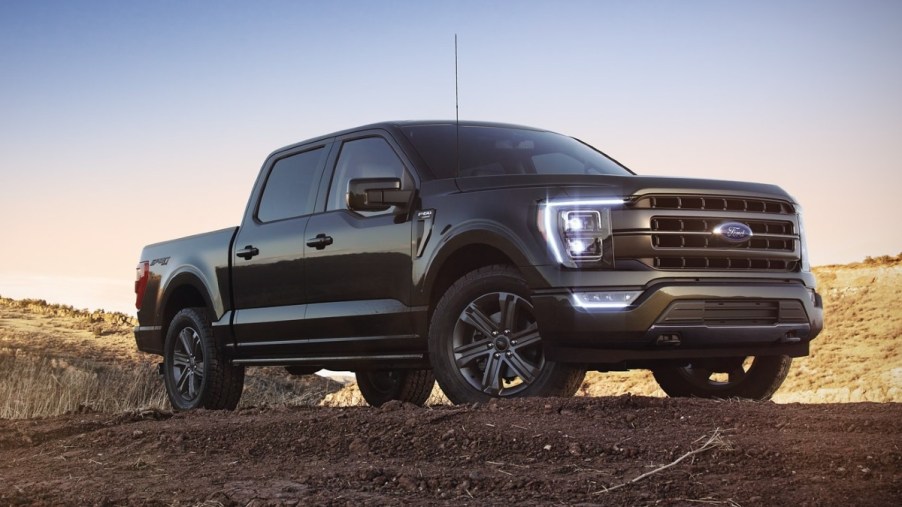
Mandated 40 MPG Fuel Economy in 2026: Ford F-150, Toyota RAV4, and Other Popular Models Fall Short of Standard
The National Highway Traffic Safety Administration (NHTSA) and the Biden administration recently announced new efficiency requirements for cars. By 2026, all car models must have a fuel economy of 40 mpg. This is a significant increase from the current requirement of 24 mpg. Also, many popular models, such as the Ford F-150 and Toyota RAV4, fall short of the new fuel economy standard.
What cars fall short of the 40 mpg fuel economy standard for 2026?

As detailed by Statistica, four out of the eight best-selling cars in the United States in 2021 do not currently meet the new 40 mpg fuel economy standard. With less than four years to reach the standard, automakers need to catch up very quickly.
Here are some of the popular car models that fall short of the 40 mpg fuel economy standard for 2026. The fuel economy listed here is the “average value across all 2021 model variations.”
- Honda CR-V: 32.3 mpg
- Nissan Rogue: 30.8 mpg
- Toyota RAV4: 30.7 mpg
- Toyota Camry: 28.1 mpg
- Ford F-150: 20.4 mpg
- Ram 1500: 20.0 mpg
- Jeep Grand Cherokee: 18.3 mpg
- Chevrolet Silverado: 17.5 mpg
Full-size pickup trucks (Ford F-150, Ram 1500, and Chevy Silverado) need to significantly raise their fuel economy to meet the 40 mpg standard

Best-selling compact crossover SUVs like the Toyota RAV4, Honda CR-V, and Nissan Rogue are the vehicles on this list that are the closest to the new 40 mpg standard. However, full-size pickup trucks, including the Ford F-150, Ram 1500, and Chevy Silverado, need to significantly raise their fuel economy by 2026 to meet the new 40 mpg standard.
The “worst offender” on the list is the Chevy Silverado, with a fuel economy of 17.5 mpg. The Silverado was the third-best-selling vehicle in the U.S. in 2021, with 519,774 units sold. The best-selling vehicle was the Ford F-Series (726,004 units sold), which includes the F-150. The F-150 has a fuel economy of 20.4 mpg. Another popular pickup truck, the Ram 1500, has a fuel economy of 20.4 mpg. Ram Trucks were the second-best-selling vehicle, with 569,388 units sold.
Why did the NHTSA and Biden administration raise the fuel economy standard?
The NHTSA raised the fuel economy standard to 40 mpg to help reduce gasoline consumption. This is part of the effort to lower carbon emissions and the negative impact on climate change. NHTSA officials claim that the new fuel economy standard “could reduce gasoline consumption by more than 220 billion gallons over the lifespan of vehicles.”
The new 40 mpg fuel economy standard is a sharp increase from the 24 mpg standard set by the Trump administration. However, that standard rolled back the Obama administration’s standard set in 2012. This standard required cars to reach 54.5 mpg by 2025.
With this in mind, some environmental groups believe that the “new requirements from NHTSA under President Joe Biden don’t go far enough to fight global warming,” as reported by Jalopnik. Dan Becker, director of the Safe Climate Transport Center at the Center for Biological Diversity, stated, “Climate change has gotten much worse, but these rules only require automakers to reduce gas-guzzling slightly more than they agreed to cut nine years ago.”
It remains to be seen if major automakers like Ford, with the F-150, and Toyota, with the RAV4, will be able to meet the new fuel economy standard by 2026. The new standard is “part of the overhaul the Biden Administration promised regarding the U.S. auto industry.” According to Pete Buttigieg, the U.S. Secretary of Transportation, the new standard “will reduce carbon emissions by 2.5 billion metric tons.”


